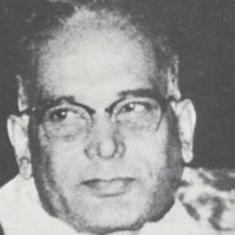Every day for the past two weeks, the Speaker has announced in the House that she has received notices from a number of Members of Parliament of a no-confidence motion but expressed her helplessness in proceeding further. It has not been set in motion by the Speaker on the ground that there is no order in the House. She thinks that unless there is order, she will not be able to take a head count of the MPs who might stand in favour of leave being granted to the mover to move the motion.
This is an unprecedented situation. A no-confidence motion is usually given the highest priority by the Speaker and the government. Whenever such motion comes, the government usually volunteers to discuss it at the earliest, although a ten-day period is available within which to take up the motion and conclude the debate and voting on it. The reason is that a government does not want to remain under the shadow of a no-confidence motion.
But things are different now. The government repeatedly says that it wants discussion on the motion. The Speaker says that she is duty-bound to bring it to the House. The Opposition gives notice every day, upset that nothing happens because there is no order in the House as some members of a southern party keeps shouting till the Speaker adjourns the House for the day. This is setting a new precedent which may not augur well for the House as no business can take place unless there is order in the House. It will be futile to think that order will come back on its own. It needs to be restored. That is what is done in all Parliaments in the world.
Dealing with the motion
A no-confidence motion is dealt with under rule 198 of the House rules. This motion arises from Article 75 of the Constitution, which says that the Council of Ministers shall be collectively responsible to the House of the People. This article gives a right to a member of the House to express his want of confidence in the Council of Ministers. A no-confidence motion is the vehicle through which such a right is exercised. Unlike other motions and notices which are required to be admitted by the Speaker, the no-confidence motion is not required to be admitted by the Speaker. In fact the rules do not confer such a right on the Speaker. So the Speaker cannot reject a notice of no- confidence in the Council of Ministers.
The Speaker is in fact duty-bound to inform the House on that day’s sitting itself that she received a notice and then request the members to rise in their places in support of leave being granted by the House. If 50 members rise, the Speaker will declare that the leave is granted by the House. The mover will then be entitled to move the motion whenever it is taken up.
This is a no-confidence motion whose fate is known. So, it has not been generated by excitement. The excitement, if there is any, is on account of the fact that the Speaker is not able to take a head count due to lack of order in the House.
Some may wonder why the Opposition is moving a no-confidence motion when it is not in a position to defeat the government on the floor of the House. It is, in fact, not necessary that a no-confidence motion should always result in the ouster of the incumbent government. It is a political move to expose the failures of the government of the day and to mobilise the political forces opposed to the government. The no-confidence motion puts the government on notice that the people are unhappy with it because of its omissions and commissions.
On the positive side, it gives an opportunity to the government to close ranks and pull up its socks so as to be able to provide better quality governance to the people. This is the right perspective from which to view this whole exercise of no-confidence motion in a legislature. The members of the House have a constitutional right to move a no-confidence motion and the government has a right to oppose and defeat it. It is a very simple exercise that need not be complicated.
PDT Achary is the former Secretary General of Lok Sabha.
This article first appeared on The Invisible Lawyer.










